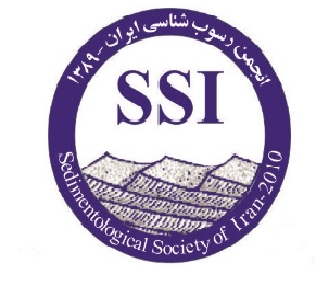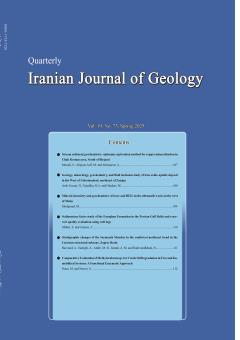Comparative Evaluation of Methylorubrum sp. for Crude Oil Degradation in Free and Immobilized Systems: A Functional Enzymatic Approach
Subject Areas :
1 -
2 -
Keywords: Alkane monooxygenase, Methylorubrum sp., Cell immobilization, Cytochrome P450, Lipase,
Abstract :
Crude oil spills and the persistence of hydrocarbon compounds in the environment pose significant threats to both human health and ecological integrity. These pollutants—due to their toxicity, chemical stability, and tendency to accumulate in water and soil—disrupt trophic interactions and exacerbate environmental degradation. Bioremediation using microorganisms offers an effective, cost-efficient, and environmentally sustainable strategy for mitigating such contamination. In this study, the crude oil degradation capacity of Methylorubrum sp. was evaluated under both free-living and sodium alginate–immobilized conditions. The activities of three key enzymes involved in hydrocarbon catabolism—alkane monooxygenase, cytochrome P450, and lipase—were also assessed. Under exposure to 4% (3200 mg/L) crude oil, free cells degraded approximately 50% of the petroleum hydrocarbons, whereas alginate immobilization enhanced degradation efficiency to 70%. Gas chromatography–mass spectrometry (GC–MS) analysis demonstrated complete degradation of light n-alkanes (C4–C9) and up to 74% degradation of long-chain n-alkanes (C14–C28) in the immobilized treatment. Field emission scanning electron microscopy (FE-SEM) confirmed the porous architecture of the alginate beads and uniform entrapment of bacterial cells. On day three, the immobilized cells exhibited peak specific activities of alkane monooxygenase, cytochrome P450, and lipase at 13.55, 9.5, and 9.0 U/mg protein, respectively. Overall, immobilization improved microbial stability, conferred resistance to environmental stress, and significantly enhanced crude oil biodegradation. These findings demonstrate the potential of immobilized Methylorubrum sp. for effective crude oil bioremediation and represent a promising step toward the development of scalable, safe, and environmentally responsible approaches to managing petroleum pollution.
Adlan, N. A., Sabri, S., Masomian, M., Ali, M. S. M. and Rahman, R. N. Z. R. A., 2020. Microbial biodegradation of paraffin wax in Malaysian crude oil mediated by degradative enzymes. Frontiers in Microbiology. 11, 565608. https://doi.org/10.3389/fmicb.2020.565608.
Ahmed, F. and Fakhruddin, A., 2018. A review on environmental contamination of petroleum hydrocarbons and its biodegradation. International Journal of Environmental Sciences and Natural Resources. 11(3), 1-7. https://doi.org/10.19080/IJESNR.2018.11.555811.
Aksu, Z. and Bülbül, G., 1999. Determination of the effective diffusion coefficient of phenol in Ca-alginate-immobilized P. putida beads. Enzyme and microbial technology. 25(3-5), 344-348. https://doi.org/10.1016/S0141-0229(99)00051-4.
Baltaci, M. O., Omeroglu, M. A., Ozkan, H., Taskin, M. and Adiguzel, A., 2024. Enhanced biodegradation of crude oil contamination by indigenous bacterial consortium under real conditions. Biocatalysis and Biotransformation. 42(1), 56-67. https://doi.org/10.1080/10242422.2023.2231592.
Elijah, A. A., 2022. A review of the petroleum hydrocarbons contamination of soil, water and air and the available remediation techniques, taking into consideration the sustainable development goals. Earthline Journal of Chemical Sciences. 7(1), 97-113. https://doi.org/10.34198/ejcs.7122.97113.
Eroglu, E., Smith, S. M. and Raston, C. L., 2015. Application of various immobilization techniques for algal bioprocesses. Biomass and biofuels from microalgae: Advances in engineering and biology, 19-44. https://doi.org/10.1007/978-3-319-16640-7_2.
Fatajeva, E., Gailiūtė, I., Paliulis, D. and Grigiškis, S., 2014. The use of Acinetobacter sp. for oil hydrocarbon degradation in saline waters. Biologija. 60(3). https://doi.org/10.6001/biologija.v60i3.2971.
Godec, M. L. and Biglarbigi, K., 1991. Economic effects of environmental regulations on finding and developing crude oil in the US. Journal of Petroleum Technology. 43(01), 72-79. https://doi.org/10.2118/20619-PA.
Hassanshahian, M., Emtiazi, G. and Cappello, S., 2012. Isolation and characterization of crude-oil-degrading bacteria from the Persian Gulf and the Caspian Sea. Marine pollution bulletin. 64(1), 7-12. https://doi.org/10.1016/j.marpolbul.2011.11.006.
Jauhari, N., Mishra, S., Kumari, B. and Singh, S. N., 2014. Bacteria-mediated aerobic degradation of hexacosane in vitro conditions. Bioresource technology. 170, 62-68. https://doi.org/10.1016/j.biortech.2014.07.091.
Jeon, Y., Bissessur, A. and Singh, P., 2019. Novel immobilization techniques of Acinetobacter (V2) and Paenibacillus (D9) bacterial strains for waste oil degradation. Biotechnology and Biotechnological Equipment. 33(1), 911-920. https://doi.org/10.1080/13102818.2019.1628663.
Jett, B. D., Hatter, K. L., Huycke, M. M. and Gilmore, M. S., 1997. Simplified agar plate method for quantifying viable bacteria. Biotechniques. 23(4), 648-650. https://doi.org/10.2144/97234bm22.
Kadri, T., Rouissi, T., Magdouli, S., Brar, S. K., Hegde, K., Khiari, Z., Daghrir, R. and Lauzon, J.-M., 2018. Production and characterization of novel hydrocarbon degrading enzymes from Alcanivorax borkumensis. International journal of biological macromolecules. 112, 230-240. https://doi.org/10.1016/j.ijbiomac.2018.01.177.
Khanpour-Alikelayeh, E., Partovinia, A., Talebi, A. and Kermanian, H., 2020. Investigation of Bacillus licheniformis in the biodegradation of Iranian heavy crude oil: A two-stage sequential approach containing factor-screening and optimization. Ecotoxicology and Environmental Safety. 205, 111103. https://doi.org/10.1016/j.ecoenv.2020.111103.
Kim, Y.-H., Freeman, J. P., Moody, J. D., Engesser, K.-H. and Cerniglia, C. E., 2005. Effects of pH on the degradation of phenanthrene and pyrene by Mycobacterium vanbaalenii PYR-1. Applied microbiology and biotechnology. 67, 275-285. https://doi.org/10.1007/s00253-004-1796-y.
Kothari, V., Panchal, M., and Srivastava, N., 2013. Microbial degradation of hydrocarbons.
Laothamteep, N., Naloka, K., and Pinyakong, O., 2022. Bioaugmentation with zeolite-immobilized bacterial consortium OPK results in a bacterial community shift and enhances the bioremediation of crude oil-polluted marine sandy soil microcosms. Environmental Pollution. 292, 118309. https://doi.org/10.1016/j.envpol.2021.118309.
Lee, G. M., Gray, J. J. and Palsson, B. Ø., 1991. Effect of trisodium citrate treatment on hybridoma cell viability. Biotechnology techniques. 5, 295-298. https://doi.org/10.1007/BF02438666.
Li, J., Zhang, H., Mei, K., Sun, L., Wang, L. and Liang, C., 2025. Enhanced degradation of petroleum hydrocarbons by immobilizing Acinetobacter. Biochemical Engineering Journal. 217, 109666. https://doi.org/10.1016/j.bej.2025.109666.
Liang, Y., Zhang, X., Dai, D. and Li, G., 2009. Porous biocarrier-enhanced biodegradation of crude oil contaminated soil. International Biodeterioration and Biodegradation. 63(1), 80-87. https://doi.org/10.1016/j.ibiod.2008.07.005.
Maki, A. A., Al-Taee, A. M. and Atwan, Z. W., 2023. Measuring the Degradation of Aromatic Compounds Using Methylorubrum extorquens Isolated from Oil-Contaminated Soils in Southern Iraq. Mesopotamian Journal of Marine Sciences. 38(1), 9-20. https://doi.org/10.58629/mjms.v38i1.323.
Mishra, S. and Singh, S., 2012. Microbial degradation of n-hexadecane in mineral salt medium as mediated by degradative enzymes. Bioresource technology. 111, 148-154. https://doi.org/10.1016/j.biortech.2012.02.049.
Mohanta, S., Pradhan, B., and Behera, I. D., 2024. Impact and remediation of petroleum hydrocarbon pollutants on agricultural land: a review. Geomicrobiology Journal. 41(4), 345-359. https://doi.org/10.1080/01490451.2023.2243925.
Moreno-García, J., García-Martínez, T., Mauricio, J. C. and Moreno, J., 2018. Yeast immobilization systems for alcoholic wine fermentations: actual trends and future perspectives. Frontiers in Microbiology. 9, 241. https://doi.org/10.3389/fmicb.2018.00241.
Ngene, S., Tota-Maharaj, K., Eke, P. and Hills, C., 2016. Environmental and economic impacts of crude oil and natural gas production in developing countries. International Journal of Economy, Energy and Environment. 1(3), 64-73. https://doi.org/10.11648/j.ijeee.20160103.13.
Nie, Y., Liang, J., Fang, H., Tang, Y.-Q. and Wu, X.-L., 2011. Two novel alkane hydroxylase-rubredoxin fusion genes isolated from a Dietzia bacterium and the functions of fused rubredoxin domains in long-chain n-alkane degradation. Applied and environmental microbiology. 77(20), 7279-7288. https://doi.org/10.1128/AEM.00203-11.
Obayori, O. S., Salam, L. B. and Ogunwumi, O. S., 2014. Biodegradation of fresh and used engine oils by Pseudomonas aeruginosa LP5. Bioremediation and Biodegradation. 5(213), 1-7. http://dx.doi.org/10.4172/2155-6199.1000213.
Omotosho, O., 2024. Degradation of Crude Oil by Microbial Populations of Lagos Lagoon Water Microcosms. The 3rd International Electronic Conference on Processes—Green and Sustainable Process Engineering and Process Systems Engineering. 105(1). https://doi.org/10.3390/proceedings2024105082.
Parthipan, P., Preetham, E., Machuca, L. L., Rahman, P. K., Murugan, K. and Rajasekar, A., 2017. Biosurfactant and degradative enzymes mediated crude oil degradation by bacterium Bacillus subtilis A1. Frontiers in microbiology. 8, 193. https://doi.org/10.3389/fmicb.2017.00193.
Partovinia, A., Khanpour-Alikelayeh, E., Talebi, A. and Kermanian, H., 2023. Improving mass transfer rates in microbial cell immobilization system for environmental applications: synergistic interaction of cells on crude oil biodegradation. Journal of Environmental Management. 326, 116729. https://doi.org/10.1016/j.jenvman.2022.116729.
Partovinia, A. and Rasekh, B., 2018. Review of the immobilized microbial cell systems for bioremediation of petroleum hydrocarbons polluted environments. Critical Reviews in Environmental Science and Technology. 48(1), 1-38. https://doi.org/10.1080/10643389.2018.1439652.
Qu, S., Liu, L., Zhang, L., Zheng, M., Feng, J., Liu, C., Miao, Y. and Jing, G., 2023. Biodegradation of crude oil by a moderately haloalkaliphilic Acinetobacter strain. Petroleum Science and Technology. 41(1), 30-44. https://doi.org/10.1080/10916466.2022.2041666.
Rezaei Somee, M., Amoozegar, M. A., Shavandi, M. and Dastgheib, S. M. M., 2016. Isolation of halophilic microbial consortia capable of degrading diesel oil for the bioremediation of drilling wastes. Journal of Microbial Biology. 5(19), 23-40. https://doi.org/10.22108/bjm.2016.21005.
Rojas-Gätjens, D., Fuentes-Schweizer, P., Rojas-Jiménez, K., Pérez-Pantoja, D., Avendaño, R., Alpízar, R., Coronado-Ruíz, C. and Chavarría, M., 2022. Methylotrophs and hydrocarbon-degrading bacteria are key players in the microbial community of an abandoned century-old oil exploration well. Microbial ecology, 1-17. https://doi.org/10.1007/s00248-021-01748-1.
Sakdapetsiri, C., Kaokhum, N. and Pinyakong, O., 2021. Biodegradation of crude oil by immobilized Exiguobacterium sp. AO-11 and shelf life evaluation. Scientific Reports. 11(1), 12990. https://doi.org/10.1038/s41598-021-92122-1.
Salam, L. B., Obayori, O. S. and Raji, S., 2015. Biodegradation of used engine oil by a methylotrophic bacterium, Methylobacterium mesophilicum isolated from tropical hydrocarbon-contaminated soil. Petroleum Science and Technology. 33(2), 186-195. https://doi.org/10.1080/10916466.2014.961610.
Schellenberg, K. A. and Hellerman, L., 1958. Oxidation of reduced diphosphopyridine nucleotide. Journal of Biological Chemistry. 231(1), 547-556. https://doi.org/10.1016/S0021-9258(19)77327-X.
Singh, S., Kumari, B. and Mishra, S., 2012. Microbial degradation of alkanes. Microbial degradation of xenobiotics, 439-469. https://doi.org/10.1007/978-3-642-23789-8_17.
Sojinu, S. O. and Ejeromedoghene, O., 2019. Environmental challenges associated with processing of heavy crude oils. Processing of Heavy Crude Oils. 241.
Srividya, A. R. and Vishnuvarthan, V. J., 2014. Immobilization of therapeutically beneficial enzymes .
Tahmasbizadeh, M., Nikaeen, M., Attar, H. M., Khanahmad, H. and Khodadadi, M., 2025. Resuscitation-promoting factors: novel strategies for the bioremediation of crude oil-contaminated soils. Environmental Research, 121085. https://doi.org/10.1016/j.envres.2025.121085.
Van Beilen, J. B. and Funhoff, E. G., 2005. Expanding the alkane oxygenase toolbox: new enzymes and applications. Current opinion in biotechnology. 16(3), 308-314. https://doi.org/10.1016/j.copbio.2005.04.005.
Van Beilen, J. B., and Funhoff, E. G., 2007. Alkane hydroxylases involved in microbial alkane degradation. Applied microbiology and biotechnology. 74, 13-21. https://doi.org/10.1007/s00253-006-0748-0.
Van Beilen, J. B., Wubbolts, M. G. and Witholt, B., 1994. Genetics of alkane oxidation by Pseudomonas oleovorans. Biodegradation. 5, 161-174. https://doi.org/10.1007/BF00696457.
Varjani, S. J., 2017. Microbial degradation of petroleum hydrocarbons. Bioresource technology. 223, 277-286. https://doi.org/10.1016/j.biortech.2016.10.037.
Wang, H. Q., Hua, F., Zhao, Y. C., Li, Y. and Wang, X., 2014. Immobilization of Pseudomonas sp. DG17 onto sodium alginate–attapulgite–calcium carbonate. Biotechnology and Biotechnological Equipment. 28(5), 834-842. https://doi.org/10.1080/13102818.2014.961123.
Wasoh, H., Veeraswamy, K., Gunasekaran, B. and Shukor, M. Y., 2019. Biodegradation of hydrocarbon sludge by Pseudomonas sp. strain UPM-KV. Journal of Environmental Microbiology and Toxicology. 7(1), 10-15. https://doi.org/10.54987/jemat.v7i1.473.
Yong, Y.-C. and Zhong, J.-J., 2010. Recent advances in biodegradation in China: new microorganisms and pathways, biodegradation engineering, and bioenergy from pollutant biodegradation. Process Biochemistry. 45(12), 1937-1943. https://doi.org/10.1016/j.procbio.2010.04.009
Zhang, X., Kong, D., Liu, X., Xie, H., Lou, X. and Zeng, C., 2021. Combined microbial degradation of crude oil under alkaline conditions by Acinetobacter baumannii and Talaromyces sp. Chemosphere. 273, 129666. https://doi.org/10.1016/j.chemosphere.2021.129666.
Zuo, K., Zhang, L., Yao, H. and Wang, J., 2010. Isolation and functional expression of a novel lipase gene isolated directly from oil-contaminated soil. Acta Biochimica Polonica. 57(3), 305-311.

